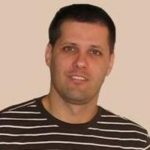
Laboratory for noise and vibration (C619) and Laboratory for machine dynamics (C618):
Measuring equipment includes:
Software for modal experimental analysis:
Research in the next one-year period will be conducted in two directions. One direction involves the study of time integration in a newly proposed technique for solving problems in structural dynamics where nonlinearity manifests itself in the external force as a function of velocity and non-orthogonal damping. The second research direction involves the determination of modal parameters using a high-speed camera. New algorithms are being developed with which the modal parameters, i.e. the vibration modes and the associated damping and natural frequencies, can be determined more precisely. These algorithms should make it possible to determine modal parameters through non-contact measurements, which has not been the case to date. Research would focus on the possibility of determining modal parameters of large objects by taking pictures with high-speed cameras from a great distance, such as wind turbines.